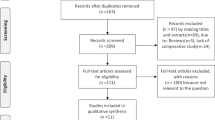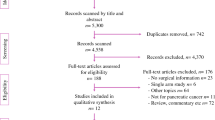Abstract
Background
The optimal stent type in patients receiving preoperative neoadjuvant chemoradiotherapy (NACRT) is uncertain. The present study aimed to compare the clinical effectiveness of biliary metallic stent (MS) and plastic stent (PS) in patients undergoing preoperative NACRT for resectable pancreatic cancer.
Methods
This retrospective study included 43 patients who required either biliary MS or PS before initiating NACRT for resectable or borderline resectable pancreatic head cancer. Seventeen patients had MS (MS group), while 23 patients had PS (PS group). All patients received preoperative NACRT, including gemcitabine and concomitant three-dimensional radiation of 54 Gy, and underwent pancreatectomy. Stent patency, surgery postponement, postoperative outcomes, and cost-effectiveness were compared between these groups.
Results
There were no significant differences in baseline demographic or tumor characteristics between the groups. Stent patency was significantly longer in the MS group than in the PS group (p = 0.042). There were no differences in time to surgery, intraoperative characteristics, surgical complications, margin positivity, and pathological response between the groups. Furthermore, the medical cost of maintenance of biliary drainage during NACRT was similar between the groups.
Conclusions
MS placement compared to PS in patients receiving preoperative NACRT provided no significant benefits during the postoperative course of pancreatectomy. However, MS placement was associated with long stent patency while showing no economic disadvantage. Therefore, MS placement may be recommended in patients receiving preoperative NACRT for resectable pancreatic cancer.


Similar content being viewed by others
References
Traverso LW (2006) Pancreatic cancer: surgery alone is not sufficient. Surg Endosc 20:S446–S449
Schnelldorfer T, Ware AL, Sarr MG et al (2008) Long-term survival after pancreatoduodenectomy for pancreatic adenocarcinoma. Ann Surg 247:456–462
Ferrone CR, Brennan MF, Gonen M et al (2008) Pancreatic adenocarcinoma: the actual 5-year survivors. J Gastrointest Surg 12:701–706
Chun YS, Milestone BN, Watson JC et al (2010) Defining venous involvement in borderline resectable pancreatic cancer. Ann Surg Oncol 17:2832–2838
Laurence JM, Tran PD, Morarji K et al (2011) A systematic review and meta-analysis of survival and surgical outcomes following neoadjuvant chemoradiotherapy for pancreatic cancer. J Gastrointest Surg 15:2059–2069
Andriulli A, Festa V, Botteri E et al (2012) Neoadjuvant/preoperative gemcitabine for patients with localized pancreatic cancer: a meta-analysis of prospective studies. Ann Surg Oncol 19:1644–1662
Katz MHG, Wang H, Balachandran A et al (2012) Effect of neoadjuvant chemoradiation and surgical technique on recurrence of localized pancreatic cancer. J Gastrointest Surg 16:68–79
Papalezova KT, Tyler DS, Blazer DG et al (2012) Does preoperative therapy optimize outcomes in patients with resectable pancreatic cancer? J Surg Oncol 106:111–118
Niels AVDG, Erik AJR, Casper HJVE et al (2010) Preoperative biliary drainage for cancer of the head of the pancreas. N Engl J Med 362:129–137
Davids PHP, Groen AK, Rauws EAJ et al (1992) Randomised trial of self-expanding metal stents versus polyethylene stents for distal malignant biliary obstruction. Lancet 340:1488–1492
Lammer J, Hausegger KA, Flückiger F et al (1996) Common bile duct obstruction due to malignancy: treatment with plastic versus metal stents. Radiology 201:167–172
Soderlund C, Linder S (2006) Covered metal versus plastic stents for malignant common bile duct stenosis: a prospective, randomized, controlled trial. Gastrointest Endosc 63:986–995
Isayama H, Yasuda I, Ryozawa S et al (2011) Results of a Japanese multicenter, randomized trial of endoscopic stenting for non-resectable pancreatic head cancer (JM-TEST): covered wallstent versus doublelayer stent. Dig Endosc 23:310–315
Moses PL, Alnaamani KM, Barkun AN et al (2013) Randomized trial in malignant biliary obstruction: plastic vs partially covered metal stents. World J Gastroenterol 19:8638–8646
Almadi MA, Barkun A, Martel M (2017) Plastic vs. self-expandable metal stents for palliation in malignant biliary obstruction: a series of meta-analyses. Am J Gastroenterol 112:260–273
Wasan SM, Ross WA, Staerkel GA, Lee JH (2005) Use of expandable metallic biliary stents in resectable pancreatic cancer. Am J Gastroenterol 100:2056–2061
Mullen JT, Lee JH, Gomez HF et al (2005) Pancreaticoduodenectomy after placement of endobiliary metal stents. J Gastrointest Surg 9:1094–1105
Kubota K, Sato T, Watanabe S et al (2014) Covered self-expandable metal stent deployment promises safe neoadjuvant chemoradiation therapy in patients with borderline resectable pancreatic head cancer. Dig Endosc 26:77–86
Gardner TB, Spangler CC, Byanova KL et al (2016) Cost-effectiveness and clinical efficacy of biliary stents in patients undergoing neoadjuvant therapy for pancreatic adenocarcinoma in a randomized controlled trial. Gastrointest Endosc 84:460–466
Sho M, Akahori T, Tanaka T et al (2013) Pathological and clinical impact of neoadjuvant chemoradiotherapy using full-dose gemcitabine and concurrent radiation for resectable pancreatic cancer. J Hepatobiliary Pancreat Sci 20:197–205
Sho M, Akahori T, Tanaka T et al (2015) Optimal indication of neoadjuvant chemoradiotherapy for pancreatic cancer. Langenbeck’s Arch Surg 400:477–485
Sobin LH, Gospodarowicz MK, Wittekind C (2009) TNM classification of malignant tumours, 7th edn. Wiley-Liss, New York
Edge SB, Compton CC (2010) The American Joint Committee on Cancer: the 7th edition of the AJCC cancer staging manual and the future of TNM. Ann Surg Oncol 17:1471–1474
Dindo D, Demartines N, Clavien P-A (2004) Classification of surgical complications. Ann Surg 240:205–213
Bassi C, Dervenis C, Butturini G et al (2005) Postoperative pancreatic fistula: an international study group (ISGPF) definition. Surgery 138:8–13
Wente MN, Veit JA, Bassi C et al (2007) Postpancreatectomy hemorrhage (PPH)-an international study group of pancreatic surgery (ISGPS) definition. Surgery 142:20–25
Boulay BR, Gardner TB, Gordon SR (2010) Occlusion rate and complications of plastic biliary stent placement in patients undergoing neoadjuvant chemoradiotherapy for pancreatic cancer with malignant biliary obstruction. J Clin Gastroenterol 44:452–455
Aadam AA, Evans DB, Khan A et al (2012) Efficacy and safety of self-expandable metal stents for biliary decompression in patients receiving neoadjuvant therapy for pancreatic cancer: a prospective study. Gastrointest Endosc 76:67–75
Tol JA, van Hooft JE, Timmer R et al (2015) Metal or plastic stents for preoperative biliary drainage in resectable pancreatic cancer. Gut 65:1981–1987
Prat F, Chapat O, Ducot B et al (1998) Predictive factors for survival of patients with inoperable malignant distal biliary strictures: a practical management guidelines. Gut 42:76–80
Prat F, Chapat O, Ducot B et al (1998) A randomized trial of endoscopic drainage methods for inoperable malignant strictures of the common bile duct. Gastrointest Endosc 47:1–7
Author information
Authors and Affiliations
Corresponding author
Ethics declarations
Conflict of interest
Authors Nakamura, Sho, Akahori, Nagai, Nishiwada, Nakagawa, Tanaka, Kichikawa, Tamamoto, Hasegawa, Mitoro, Yoshiji, and Ikeda have no conflicts of interest or financial ties to disclose.
Rights and permissions
About this article
Cite this article
Nakamura, K., Sho, M., Akahori, T. et al. A Comparison Between Plastic and Metallic Biliary Stent Placement in Patients Receiving Preoperative Neoadjuvant Chemoradiotherapy for Resectable Pancreatic Cancer. World J Surg 43, 642–648 (2019). https://doi.org/10.1007/s00268-018-4820-6
Published:
Issue Date:
DOI: https://doi.org/10.1007/s00268-018-4820-6




